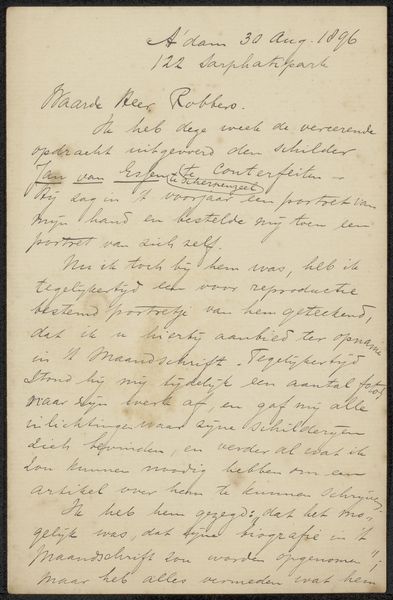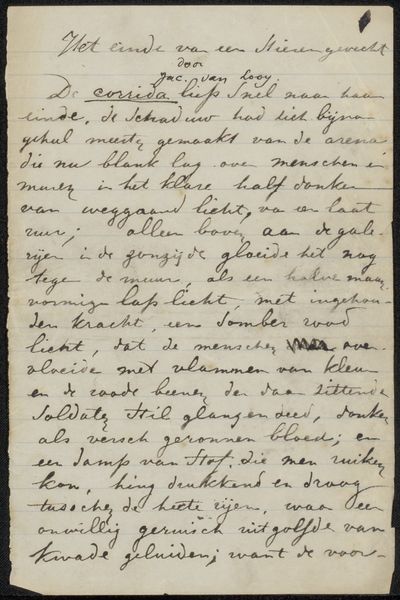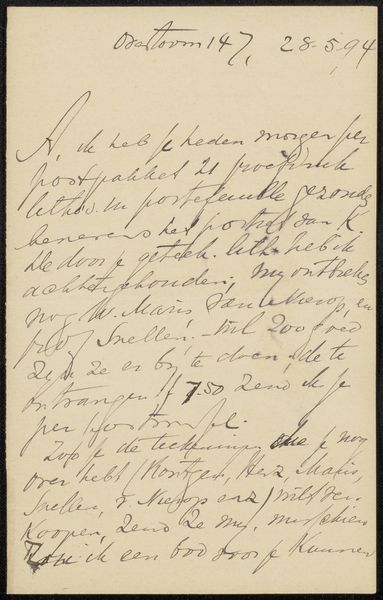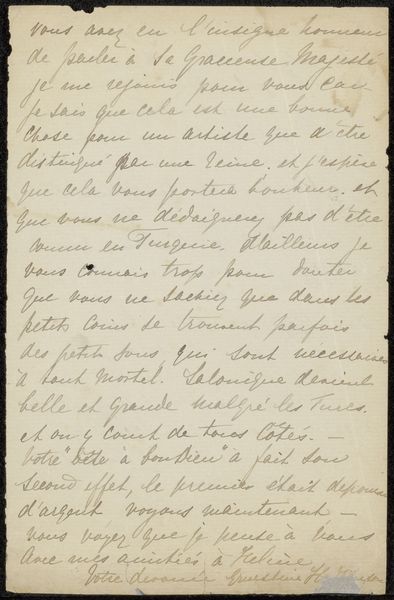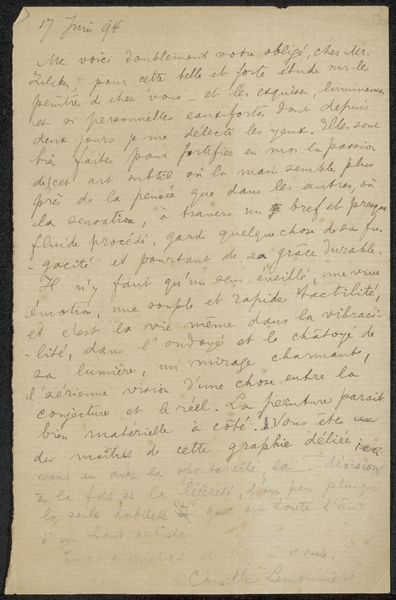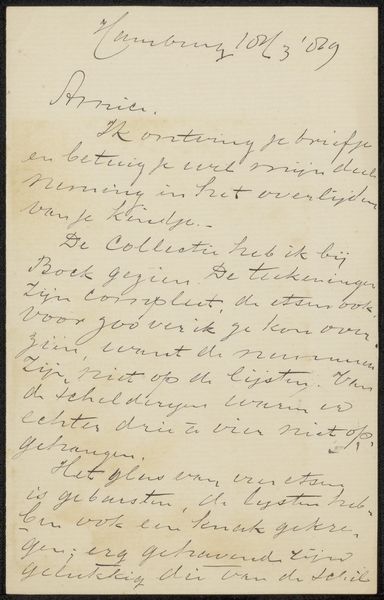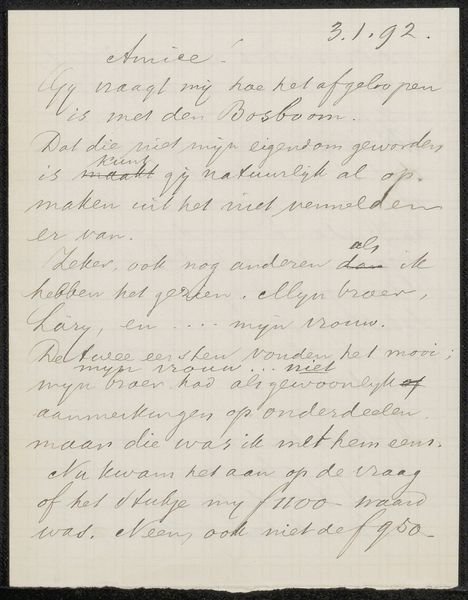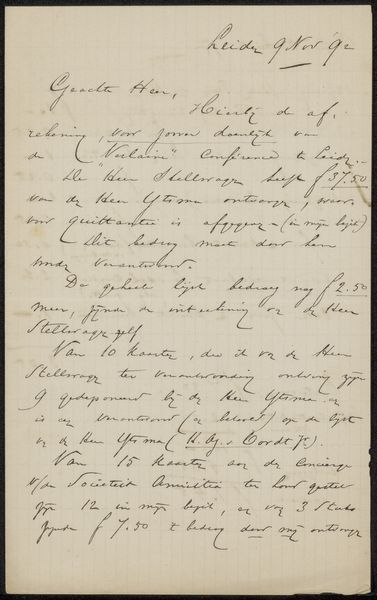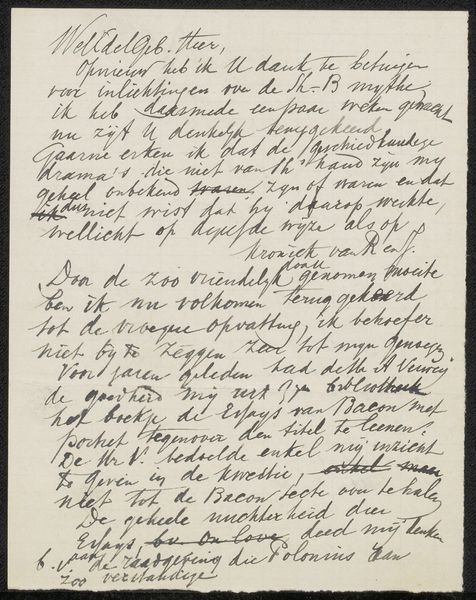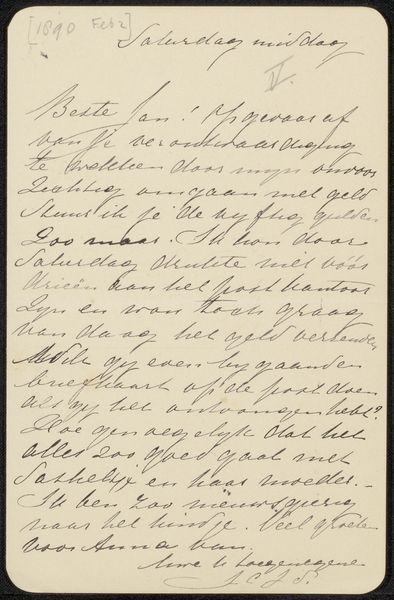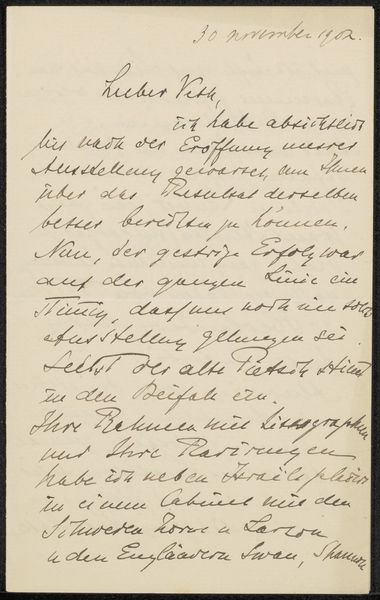
drawing, paper, ink, pen
#
drawing
#
hand-lettering
#
dutch-golden-age
#
ink paper printed
#
hand drawn type
#
paper
#
personal sketchbook
#
ink
#
hand-drawn typeface
#
ink drawing experimentation
#
pen-ink sketch
#
pen work
#
sketchbook drawing
#
pen
#
sketchbook art
Copyright: Rijks Museum: Open Domain
Curator: The piece we're looking at today is titled "Brief aan Jan Veth," which translates to "Letter to Jan Veth," crafted between 1874 and 1894 by M.C. Lebret. It's an ink drawing on paper. Editor: The immediate feeling is one of intimacy and antiquity, almost fragile. The dense script gives it a textured visual rhythm. It’s surprisingly moving, like stumbling upon a forgotten secret. Curator: Absolutely. Its power lies not just in what's written, but in the very act of inscription. We see Lebret experimenting with a hand-drawn typeface and penmanship, almost like a personal exploration of written communication as a craft. Look closely at the ink, its color, how it interacts with the paper. Editor: Indeed, the ink's varying darkness gives a sculptural quality. And consider the structure – how Lebret fills the page. It's not just information transfer; it’s the construction of a visual object that is, in itself, a reflection of personal exchange and historical documentation. Curator: Precisely. The "Dutch Golden Age" style is reflected, but it feels more immediate, more connected to the daily life of its creator. Think of the socioeconomic factors: pen and paper as accessible tools, literacy and the desire to share thoughts...It presents another interesting glimpse into labor and the cultural value Lebret assigned to communication and personal relationships in his time. Editor: To see this as an art object, one isolates moments—that single, darker flourish in the middle, for instance—that go beyond pure utility and into aesthetic expression, especially since so many artists were corresponding with one another. Curator: And that’s the power, right? Bridging that separation between everyday life and deliberate artistic expression through careful visual choices, Lebret asks us to appreciate these forms in ways that both celebrate intimacy and the legacy of labor. Editor: So, in closing, a piece not just for its practical function as correspondence, but for the intimate dialogue it now strikes with viewers across time.
Comments
No comments
Be the first to comment and join the conversation on the ultimate creative platform.
